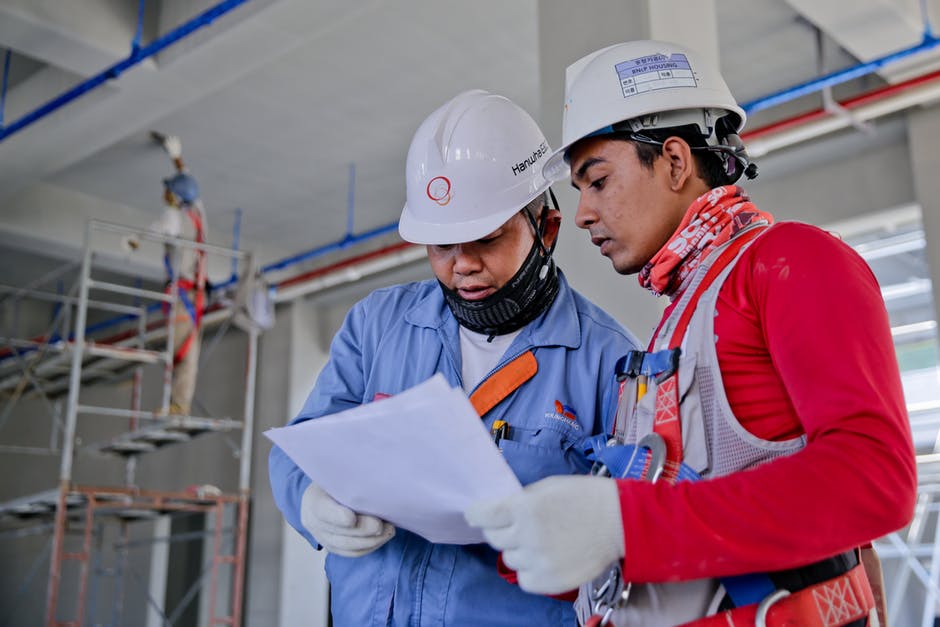Writing a Workplace Safety Policy for Your Small Business
Did you know that a worker is injured on the job every seven seconds? That statistic is from the National Safety Council.
Workplace injuries can cause a lot of problems for a business. Injuries can lead to low employee morale, lost productivity, and higher operations costs.
You need to put safety first for your employees and for your business. You can start by creating a workplace safety policy. That is the very first step in creating a culture within your organization that emphasizes safety.
There are a number of legal and regulatory risks when creating a safety policy, so you want to make sure you get it right.
Are you ready to learn the steps to creating an effective policy for your business?
Let’s get started!
Audit for Hazards
The first step in creating a safety policy is to know the risks lurking inside the workplace. Your job is to assess the risks, classify them, and prioritize them. That will enable you to correct them quickly with no issues.
You also want to look back at your records to spot any previously reported injuries. These records can reveal patterns that you can address. For example, if you find that most of the injuries occur late in the day, you can take steps to ensure employees are taking breaks to remain sharp.
Other patterns that may appear in these injury reports can be the type of injury or the cause of injury.
As part of your audit, interview employees and executives to get their input on risks and hazards to employees. When you interview employees, you need to assure them that the information is confidential. That can put them at ease so you can get the most accurate information.
The risks and hazards should fall into the following categories.
Ergonomic Hazards
This is a concern for staff who sit at the computer all day. Sitting all day is a health hazard and it can lead to low back pain.
Office workers also handle repetitive movements like typing and using a mouse. This frequently leads to carpal tunnel syndrome. The positioning of the body needs to be exact to reduce the risk of injury.
Chemical Hazards
Your workplace may have a variety of substances that are chemical hazards. Acids, cleaning products, and petroleum products are a few examples of chemical hazards.
Biological Hazards
Those in the healthcare industry are likely to come across biological hazards like blood and bodily fluids. These aren’t limited to healthcare, though. Any office could have these hazards around, especially if an employee gets cut.
Other biological hazards are bacteria and viruses that tend to be very active in workplaces during the winter flu season.
Physical Hazards
These hazards usually relate to slips and fall incidents. Examples of these hazards include slippery flooring or a pile of network cables placed in high-traffic areas.
After you gather your information, review the risks. You’ll then prioritize each one and develop a plan to mitigate those hazards.
Follow the Laws and Regulations
There are going to be some items that you have to include in your workplace safety plan. These requirements will depend on your industry and where your business is located.
You’ll want to research federal and state laws to see what the requirements are. Start with your state’s department of labor and then check with OSHA to see what needs to be addressed.
You also want to check with your workers compensation insurance company. You want to make sure that there isn’t some kind of legal fine print that will prevent employees from exercising their right to compensation if they need it after an injury.
Get Employees Involved in the Policy-Making Process
By interviewing employees and executives early on in the process, you’re sending the message that workplace safety is taken seriously at your place of business.
You’re also getting them involved early in the policy process. You want to make sure that everyone is on board with your policy, so it’s easier to implement.
Keep employees involved in the process by creating a workplace safety committee. This is the way to get employee buy-in and make sure that all employee concerns are addressed.
A safety committee should be a committee that exists beyond the creation of the safety policy. They should meet regularly to address ongoing concerns and review the policy for any changes or adjustments.
This goes a long way to show that your company takes safety seriously. It also creates a real workplace safety culture. This type of workplace culture has been shown to improve productivity and reduce the number of injuries.
Developing the Safety Policy
Your safety should have a few components. The first component is preventative. The second part will focus on managing emergency situations. The third component is related to workers compensation.
Typically, organizations will treat policies that address preventative measures and emergency situations as one safety policy. Workers compensation is treated as a separate, but necessary policy.
In most larger organizations, the HR department is in charge of creating and implementing these policies. In other organizations, the duties will be split. HR handles workers compensation while department heads handle preventative and emergency policies.
In smaller businesses, the three policies are managed by the business owner or office manager. You need to find the best setup for your business.
Components of the Safety Policy
Your safety policy needs to address a number of issues. These are the items that you need to have in your policy.
The Scope and Goals of the Policy
The scope of the plan is a brief statement that says who is covered under your safety policy. You may limit it to employees, though you should consider covering contractors, volunteers, visitors, and vendors.
This doesn’t mean that everyone is covered under workers compensation. That’s only reserved for employees.
The goal of the policy is pretty simple. It’s to improve the safety of workers and reduce the rate of injury at your organization.
Current Hazards and Remedies
You need to show everyone at your organization that you are taking a proactive approach to safety. In this section, you need to outline all of the potential hazards you discovered in your audit.
You should also note the steps to remedy them and when issues are taken care of.
How to Report Hazards
Employees are going to be the first ones to spot hazards in the workplace. They need to have a designated person to report them to.
It’s just as important to have someone in place with the authority to rectify the situation as soon as possible. You don’t want to have a situation where an employee reports an issue and nothing is done for weeks. That sends the message that workplace safety is a low priority.
Employee Training
You’re going to want to get employees up to speed on the policies and procedures as soon as possible. You also want to make sure that they are well-prepared to handle emergency situations.
Include what kind of training employees can expect and how often training sessions will occur.
Safety Committee
The policy needs to include the fact that there is a safety committee. Note what their responsibilities are and how often they meet.
You can also include a sample meeting agenda, so everyone understands what the committee does.
Emergency Procedures
In your audit, you noted the most likely and frequent risks in your business. Even though you’re taking the appropriate steps to prevent injuries, everyone needs to know what to do in an emergency.
Have very specific and simple steps outlined in your policy for workers to follow.
Workers Compensation Procedure
The final component of the workplace safety policy is about workers compensation. Businesses have workers comp insurance to protect workers if they’re injured on the job.
Your policy needs to address how workers compensation is administered at your business. That starts by having employees report injuries caused by the workplace immediately.
There should be one person who receives these reports, whether that’s someone on the safety committee or someone in HR.
The policy should also address employees’ rights when selecting a workers compensation doctor, the compensation benefits, travel expenses, and medical expense reimbursement.
There will be forms that have to be filled out and filed with the insurance company. These should be mentioned in the policy and what the steps are to get approved.
There should be policies in place that address what happens if a worker can no longer return to work.
Workplace Safety Starts with a Safety Policy
Your employees are your most valuable asset. You want to show that you appreciate their hard work and you value their wellbeing.
You can increase productivity and improve employee morale by showing employees that you take workplace safety seriously. That begins by having a comprehensive safety policy that addresses injury prevention, emergency situations, and workers compensation.
It’s not easy to change the culture of an organization, which is why you want to get employees and executives involves in the process.
Do you want more valuable business tips? Check the business section of this site regularly for more helpful articles.





